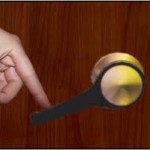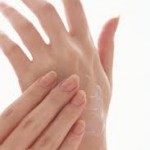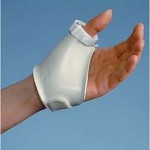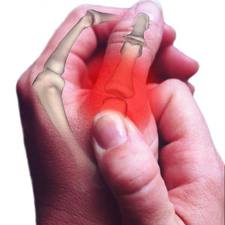Thumb arthritis or also known as basal join arthritis takes place when the joint located at the wrist and the base of the thumb become affected with osteoarthritis. Thumb arthritis can result to inflammation and incapacitating hand pain, reduced the force and variety of movement leading to do simple things complicated like simply turning the doorknobs.
There are ways that can be helpful in treating thumb arthritis that can do even at home. But except for severe cases, surgery may need to apply in treating thumb arthritis.
What are the symptoms of thumb arthritis?
Pain at the bottom or base of the thumb is the first and most general symptom of thumb arthritis. There is tenderness when there is too much strength applies in grasping and pinching an object like pulling a zipper, turning a key or even opening a jar. Sooner or later, pain may occur even when your thumb is at rest.
Signs and symptoms of thumb arthritis may include the following.
- Pain at the bottom or base of the thumb
- Inflammation, stiffness and soreness at the base of the thumb
- Reduced force when used to grasp things
- Reduced range of movement
- Inflamed or enlarged joint at the bottom of the thumb
The pain and the reduced movement of the affected part due to thumb arthritis may be negligible or can even be major. It will depend on the intensity of the condition and how you make use of your hands.
What are the causes of thumb arthritis?
The real cause of thumb arthritis is not yet known. Medical researchers believe that the reason behind of developing thumb arthritis is combination of aspect that includes the aging process, overweight, stress, joint injury, weakness of the muscle, genetically and over or repetitive use of the joint.
Thumb arthritis develops once the cartilage that use to wraps the ends of the bones get weak and the flat surface become rough. This may lead to friction since there is the development of bones stroking against with each other that eventually, may result to joint damage.
What is the risk factors affecting thumb arthritis?
The following are the factors that may enhance the risk of developing thumb arthritis.
- Women are more prone to develop thumb arthritis than men
- People with 40 years of age or more
- If certain health conditions run in the family like joints malformation and joint ligament laxity
- Doing certain physical activities and works that put too much strain on the joint
What are the natural ways in treating thumb arthritis?
1.    Do range of motion movements.
 Exercising your thumb by moving it through its full range of motion can help to progress the joints ability to move. You can consult your doctor or your therapist to show the definite practices that best suits you.
Exercising your thumb by moving it through its full range of motion can help to progress the joints ability to move. You can consult your doctor or your therapist to show the definite practices that best suits you.
Â
Â
Â
Â
Â
 2.    Change home equipment.
 Think about of buying adaptive equipment that may lessen pressure in handling or using it like key turner, jar opener and big zipper pulls. Substitute the usual door knob with levers so no need for you to grasp it with your thumb. You may also seek advices from your doctor or hand therapist of the equipment that may surely help you.
Think about of buying adaptive equipment that may lessen pressure in handling or using it like key turner, jar opener and big zipper pulls. Substitute the usual door knob with levers so no need for you to grasp it with your thumb. You may also seek advices from your doctor or hand therapist of the equipment that may surely help you.
3.    Apply heat or cold packs.
 Application of heat or cold packs or even alternating can help to ease the pain and inflammation of the joints.
Application of heat or cold packs or even alternating can help to ease the pain and inflammation of the joints.
Heat pack can relieve the pain, reduce the stiffness of the joint and relax the stressed muscles. There are different types of heat that work much better for several people. Try to make use of hot packs or electric heating pads on the lowest temperature, wet through your hands including the wrists in bowl of lukewarm water or just take a hot bath or shower.
Cold packs can be useful in lessening the pain throughout the burst out or after performing stressful workout. Soak your hands in cool or cold water or just apply cold packs, it can be helpful in making the pain not intensely felt since it has a numbing effect.
Take extra precaution when making use of hot or cold pack to avoid burning up or get frostbite.
 4.    Make use of other joints when possible.
 Avoid using the affected joint when possible like for example, open the door by pushing it with your shoulder or by pushing it with your one finger than grasping the doorknob. This will lessen the pressure on the affected joint caused by thumb arthritis.
Avoid using the affected joint when possible like for example, open the door by pushing it with your shoulder or by pushing it with your one finger than grasping the doorknob. This will lessen the pressure on the affected joint caused by thumb arthritis.
5.    Evaluate what causes the pain.
 Try to evaluate the things or ways that causes the pain and keep away from it. Avoid the movements that may cause pain whether it may be instantly or hours later.
Try to evaluate the things or ways that causes the pain and keep away from it. Avoid the movements that may cause pain whether it may be instantly or hours later.
Â
Â
Â
 6.    Make use of splint
 Your doctor may advice you to make use of a splint to support your joint and restrict the motion or movement of the thumb and wrist. Make use of splint may help to reduce the pain, promote the correct location and provide enough rest to your joint. Splint can be put all through the day and night or only at night depending on your situation.
Your doctor may advice you to make use of a splint to support your joint and restrict the motion or movement of the thumb and wrist. Make use of splint may help to reduce the pain, promote the correct location and provide enough rest to your joint. Splint can be put all through the day and night or only at night depending on your situation.
These are ways that can bring great relief of the pain caused by thumb arthritis. However, if there is persistent pain and swelling at the base of your thumb do not hesitate to seek medical advice from your doctor to obtain medical treatment.
